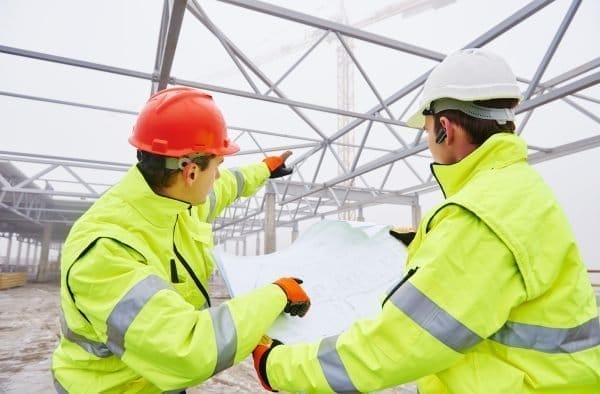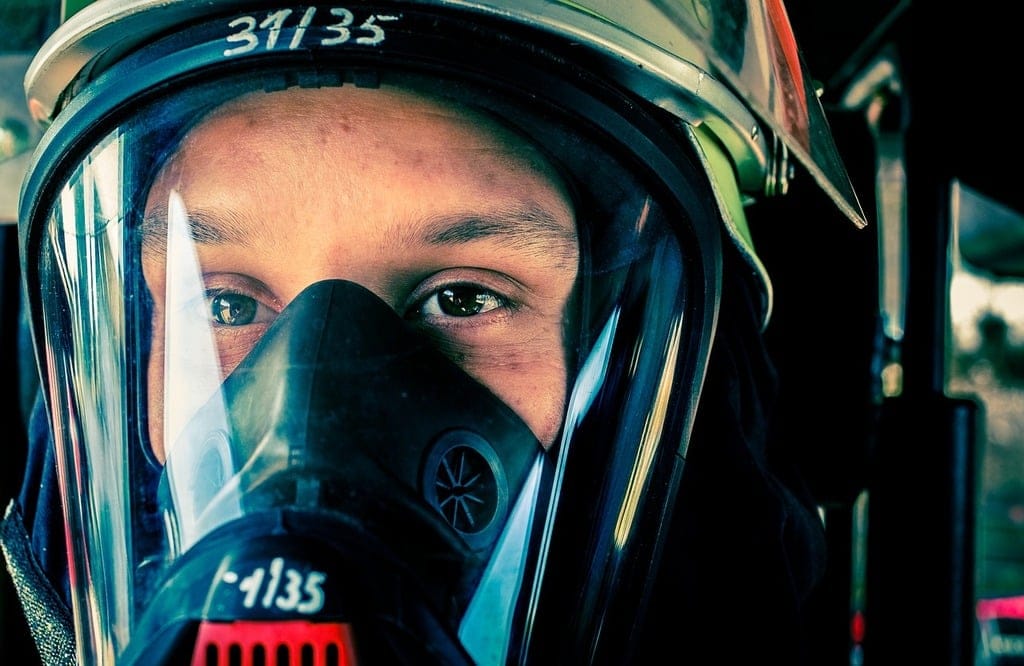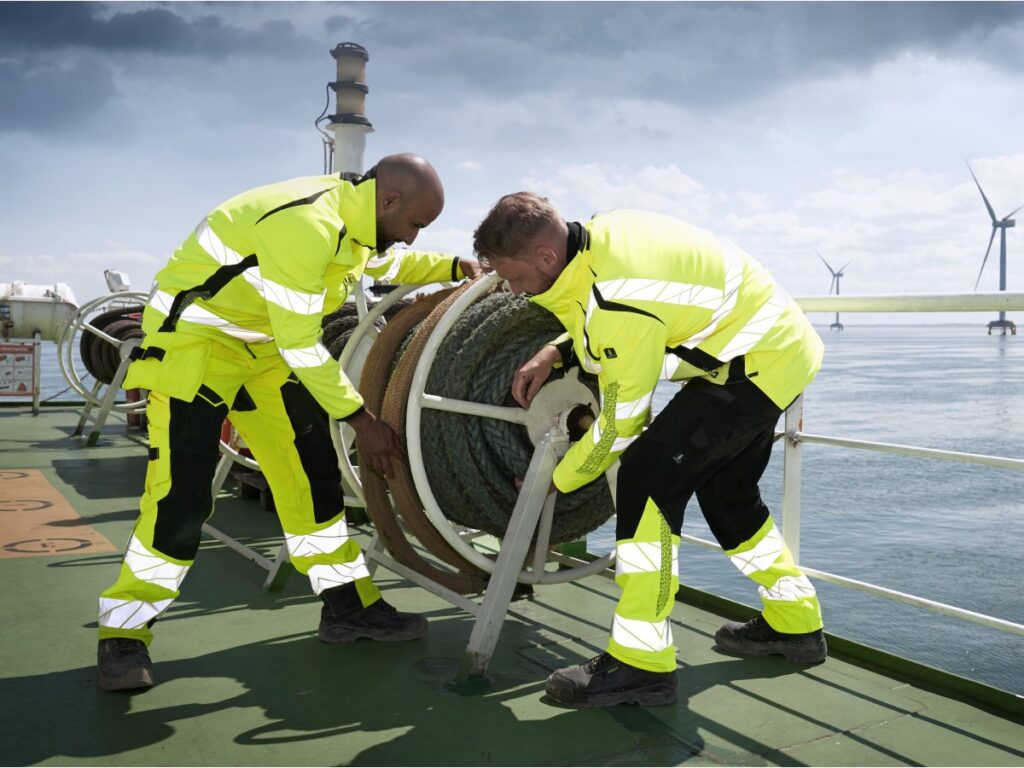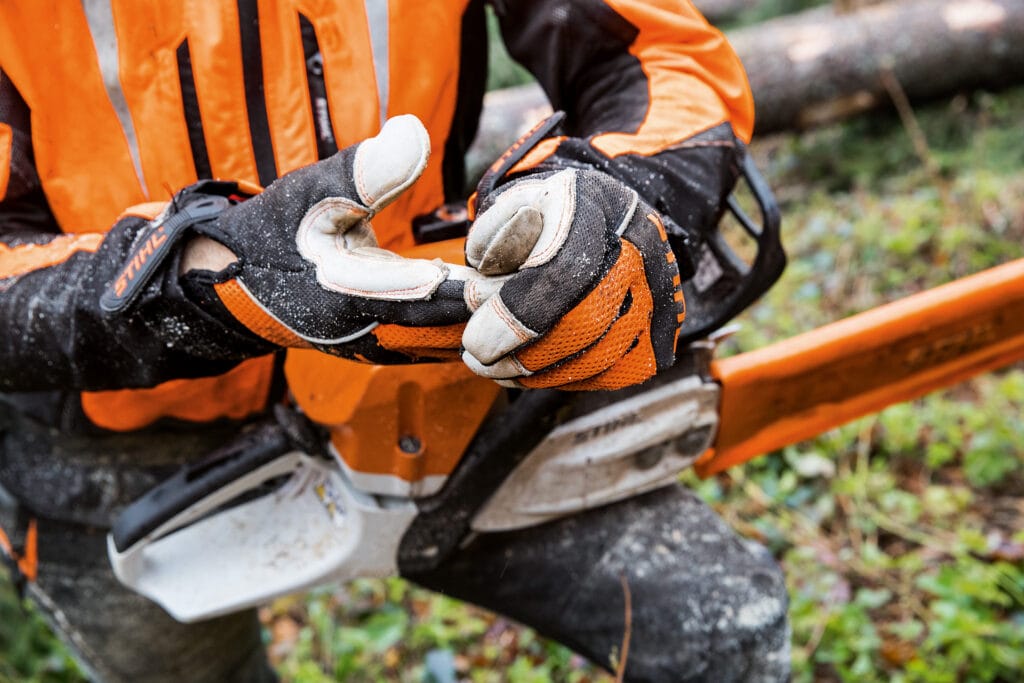
In the deserts of Saudi Arabia, the offshore rigs of Qatar, and the refineries of the UAE, fire and explosion risks are part of daily life. Workers in the oil & gas sector face hazards that demand more than ordinary uniforms. They need flame-resistant (FR) workwear that protects against flash fires, arc flashes, and extreme heat—without sacrificing comfort in harsh climates.
For distributors and agents, FR workwear in the Middle East is not just a compliance issue—it’s a market opportunity. This guide explores demand drivers, international standards, case studies, product selection tips, sourcing strategies, and cost-saving insights for flame-resistant workwear.
Google Snippet: Quick Answer
Flame-resistant workwear in the Middle East oil & gas sector must meet NFPA 2112, EN ISO 11612, or equivalent standards. Key products include FR coveralls, jackets, and hoods made of treated cotton, aramid blends, or modacrylic fabrics. Buyers prioritize protection against flash fire, breathability in hot climates, and certified compliance for international projects.
Why the Middle East Needs Specialized FR Workwear
The Middle East is home to some of the largest oil & gas reserves in the world, making worker safety a critical concern. Let’s break down the factors:
-
High fire and explosion risk
Refineries, drilling rigs, and pipelines all pose ignition hazards. Ordinary cotton coveralls can ignite instantly, leading to fatal injuries. FR workwear slows ignition and self-extinguishes, giving workers crucial escape time. -
International contractor requirements
Companies like Aramco, ADNOC, and QatarEnergy demand strict compliance with NFPA and EN standards. Without certified FR workwear, contractors risk being excluded from bids. -
Extreme desert climate
Summer temperatures often exceed 45°C. Workers need FR gear that is both protective and breathable. Heavy fabrics cause heat stress, which is a safety risk on its own. -
Reputation and worker retention
Well-equipped workers are more motivated and loyal. In regions with labor shortages, providing proper safety gear helps companies attract and retain skilled staff. -
Legal and insurance pressures
Middle Eastern governments and insurers are tightening safety regulations. An accident involving non-compliant workwear can result in fines, lawsuits, or loss of contracts.
Real-World Cases from Middle East Oil & Gas Sites
Case #1 – Refinery in Saudi Arabia
A worker wearing untreated cotton overalls was caught in a flash fire during pipeline maintenance. The fabric ignited instantly, leading to severe burns.
Lesson: Contractor switched to NFPA 2112-certified FR cotton coveralls, which self-extinguish after ignition and dramatically reduce injury severity.
Case #2 – Offshore rig in Qatar
Workers were issued heavy aramid FR suits that were too hot for daytime shifts. Many wore them incorrectly—unzipped or with sleeves rolled up—nullifying protection.
Fix: Management introduced lightweight modacrylic-blend FR coveralls with moisture-wicking properties. Compliance improved, and heat stress cases dropped by 30%.
Case #3 – Gas plant in Oman
An inspection found workers wearing FR clothing without visible certification labels. Auditors rejected the PPE, and the contractor faced delays until new, properly labeled FR gear was imported.
Lesson: Certification labels are as important as the fabric itself for compliance in Middle East projects.
Case #4 – Drilling site in Kuwait
Safety boots provided were not flame-resistant. During a minor fire, a worker’s synthetic shoelaces melted, causing severe foot burns.
Change: Company now procures FR-rated boots and prohibits synthetic accessories that can melt.
Case #5 – Petrochemical plant in UAE
A distributor supplied budget FR clothing, but after six washes, the flame-resistant treatment faded. Workers were unknowingly exposed.
Outcome: Supplier was blacklisted. Buyer now insists on testing wash durability and sourcing from certified factories.
These cases show the harsh truth: in the oil & gas sector, the wrong workwear can cost lives, contracts, and reputations. The right FR gear, on the other hand, builds trust and ensures repeat orders in one of the most lucrative PPE markets in the world.
Flame-Resistant Workwear Standards in the Middle East
For oil & gas projects in the Middle East, buyers must navigate both international and regional standards. The wrong choice can block a contract.
| Standard | Region / Authority | Purpose |
|---|---|---|
| NFPA 2112 | USA (widely used globally) | Specifies minimum performance for FR garments in protecting against flash fire |
| EN ISO 11612 | EU / International | Defines heat and flame protection for clothing |
| EN ISO 11611 | EU | Focused on welding and allied processes |
| ASTM F1506 | USA | Electric arc protection for workers |
| GSO Standards | Gulf Cooperation Council | Regional safety compliance often aligned with NFPA/EN |
| ARAMCO / ADNOC Specs | Saudi Arabia, UAE | Contractor-specific PPE requirements often stricter than global standards |
✅ Pro Tip: Always request a Declaration of Conformity (DoC) and make sure the garments carry visible certification labels. In Middle Eastern tenders, auditors often reject gear without permanent, legible labels—even if the product is technically compliant.
Key FR Workwear Items for Oil & Gas
| Item | Primary Role | Fabric Recommendation |
|---|---|---|
| FR Coveralls | Full-body flash fire protection | FR-treated cotton, modacrylic blends |
| FR Jackets & Pants | Layering option for colder nights | Aramid or modacrylic blends |
| FR Shirts | Daywear for hot climates | Lightweight FR cotton, 170–210gsm |
| FR Hoods & Balaclavas | Protect head/neck from flames | Aramid knit fabrics |
| FR Gloves | Hand protection during hot work | Leather with FR lining |
| FR Safety Boots | Protect feet from heat, prevent melting | Leather uppers, FR-rated laces |
| High-Visibility FR Vests | Nighttime and desert work safety | FR polyester blends with reflective tape |
📌 Note: Many projects require arc flash-rated gear in addition to FR. Buyers should confirm whether the scope includes electrical work.
Material Selection Tips
Different fabrics perform differently under heat, sweat, and repeated washing. Here’s a practical guide:
-
FR-Treated Cotton
- Pros: Affordable, breathable, comfortable in hot climates.
- Cons: FR protection fades after ~50 washes if low quality. Must buy from certified factories.
-
Modacrylic Blends (e.g., modacrylic + cotton + anti-static fibers)
- Pros: Permanent FR properties, lightweight, good moisture control.
- Cons: More expensive than treated cotton.
-
Aramid (Nomex, Kevlar blends)
- Pros: Excellent flame protection, durable, resistant to chemicals.
- Cons: Heavy, expensive, not comfortable in extreme heat.
-
Multi-Layer Systems
- Used in high-risk environments (refineries, welding areas). Typically combine an FR base layer + mid-layer + outer shell.
✅ Tip from Buyers in UAE: For summer shifts, distributors prefer 170–190gsm FR cotton coveralls. For winter night operations, they stock heavier 240–280gsm blends.
Procurement Mistakes to Avoid
Even experienced buyers fall into traps. Here are the most common:
-
Overlooking wash durability
Many suppliers sell FR-treated cotton that loses protection after a few washes. Always ask for wash-test reports. -
Ignoring labeling compliance
Without stitched certification labels, garments may be rejected by auditors—even if they meet NFPA/EN standards. -
Choosing wrong fabric weight
Supplying heavy aramid suits for desert work leads to non-compliance, because workers won’t wear them properly. -
Focusing only on price
In oil & gas contracts, penalties for non-compliance or accidents far outweigh savings from low-cost PPE. -
Not considering heat stress
A “safe” but non-breathable fabric can cause dehydration and accidents. Breathability is as important as flame resistance in the Middle East.
Cost-Benefit Analysis of FR Workwear
| Scenario | Without Certified FR Gear | With Certified FR Gear | Financial Impact |
|---|---|---|---|
| Flash fire accident (burn treatment + downtime) | $120,000+ average claim | < $100/worker/year for FR gear | Savings: $119,900 |
| Tender disqualification due to non-compliant PPE | Loss of $5M contract | Approved participation | Potential gain: $5M |
| Worker heat stress cases (medical + lost hours) | $2,500/incident | $30 extra for lightweight fabric upgrade | ROI within 1 season |
| Replacement cycle (low-quality FR) | Garments fail after 15 washes | Certified FR lasts 50+ washes | 3× lifespan, 60% lower total cost |
Bottom line: Certified, climate-appropriate FR workwear is not a cost—it’s an investment that protects both lives and contracts.
Layering Strategy for Desert and Offshore Conditions
In the Middle East, oil & gas workers often face two extremes in one shift: scorching heat during the day and cooler desert nights. A smart layering strategy ensures safety and comfort.
-
Base Layer (Next-to-Skin)
- FR-rated moisture-wicking T-shirts.
- Avoid cotton underwear (retains sweat and increases burn risk).
- Best option: FR-treated cotton or modacrylic blends, 150–170gsm.
-
Mid Layer (Optional)
- Lightweight FR shirts or vests for evenings.
- Chosen when night temperatures drop below 20°C.
-
Outer Layer
- Full FR coveralls with reflective strips.
- Waterproof coating if used offshore.
- Aramid blends for high-risk sites; FR cotton for hot, dry climates.
✅ Tip: Encourage workers to wear all layers zipped and cuffed. A half-open FR coverall won’t protect in a flash fire.
Risk Mitigation Strategies for Distributors & Contractors
To avoid costly compliance issues and workplace accidents, smart buyers in the Middle East focus on these:
-
Verify Certificates Before Import
Always request NFPA/EN test reports from accredited labs. Fake certificates are common in low-cost supply chains. -
Pre-Shipment Inspections
Hire a third-party inspection agency in China before shipment. Verify labels, stitching quality, and fabric weight. -
Trial Orders for Climate Testing
Import small batches and test comfort in real field conditions. Gather worker feedback before placing large tenders. -
Maintenance Plans
Offer clients wash guidelines: e.g., industrial laundry at ≤60°C to maintain FR properties. This extends product life and avoids premature replacement. -
Stock Local Spare Gear
Oil & gas projects often need urgent replacements. Distributors who keep buffer stock locally win repeat contracts.
Regional Distribution Tips
The Middle East is not one single market. Each sub-region has its quirks:
-
Saudi Arabia
- Aramco contractors dominate. Strict NFPA 2112 enforcement.
- High demand for FR coveralls with reflective tape.
- Buyers prefer long-term supplier partnerships.
-
UAE (Abu Dhabi, Dubai)
- Hub for imports and re-exports.
- ADNOC sets PPE specs.
- Strong demand for branded FR gear in blue + orange corporate colors.
-
Qatar
- LNG industry projects.
- Buyers emphasize lightweight fabrics due to high humidity.
- Local distributors often handle bulk orders for multiple contractors.
-
Oman & Kuwait
- Smaller but growing oil & gas operations.
- Focus on affordable FR cotton gear with clear certification.
- Faster payment cycles than KSA/UAE.
📌 Advice for Distributors: Build networks in industrial zones, free zones, and port cities. These are hotspots where procurement managers source safety gear.
Buyer FAQ
Q1: Can we use FR-treated cotton instead of aramid?
A: Yes, for most refinery and rig work, FR cotton is acceptable as long as it’s NFPA 2112 or EN ISO 11612 certified. Aramid is only required for very high-risk or specialized sites.
Q2: How often should FR workwear be replaced?
A: Typically after 50–70 industrial washes, or immediately if the garment is torn, contaminated, or loses labeling.
Q3: Are reflective strips mandatory?
A: In most Middle East projects, yes. High-visibility strips are required for night shifts, desert work, and roadside operations.
Q4: How to avoid fake certificates from suppliers?
A: Check if the test reports come from recognized labs like UL, SGS, Intertek. Cross-verify the report number directly with the lab.
Procurement Checklist
- [ ] NFPA 2112 or EN ISO 11612 certification (with test reports)
- [ ] Permanent certification labels stitched onto garments
- [ ] Fabric weight suitable for desert climates (170–240gsm)
- [ ] Reflective tape placement per contractor specs
- [ ] Wash durability test reports (≥50 washes)
- [ ] Pre-shipment inspection completed
- [ ] Buffer stock strategy for urgent replacements
Conclusion
Flame-resistant workwear is not just a box-ticking exercise in the Middle East oil & gas sector—it’s the difference between winning multimillion-dollar contracts and being excluded from tenders. Distributors and agents who understand local standards, climates, and worker comfort can position themselves as trusted partners in this high-value market.
📩 Need NFPA/EN-certified FR workwear for oil & gas projects?
Email: [email protected]
🌐 www.workwearsolutions.net
Zion Zhang
Recent Posts
 Workwear in Africa’s Construction Boom: Demand, Trends, and Opportunities2025年9月11日Walk through any African city today, and you’ll see […]
Workwear in Africa’s Construction Boom: Demand, Trends, and Opportunities2025年9月11日Walk through any African city today, and you’ll see […] PPE Distributor Success Stories: From Small Orders to Large Contracts2025年8月20日I’ll never forget the story of a small distributor in […]
PPE Distributor Success Stories: From Small Orders to Large Contracts2025年8月20日I’ll never forget the story of a small distributor in […] How to Build a Strong PPE Sales Channel in Emerging Markets: A Buyer’s Guide2025年8月20日I was in a meeting with a distributor from Lagos, Nigeria, […]
How to Build a Strong PPE Sales Channel in Emerging Markets: A Buyer’s Guide2025年8月20日I was in a meeting with a distributor from Lagos, Nigeria, […] PPE Supplier Risk Management: How to Avoid Supply Chain Failures2025年8月20日One of the most valuable lessons I’ve learned in the PPE […]
PPE Supplier Risk Management: How to Avoid Supply Chain Failures2025年8月20日One of the most valuable lessons I’ve learned in the PPE […] PPE Quality Inspection: Buyer Case Studies2025年8月20日When you’re sourcing PPE from international suppliers, […]
PPE Quality Inspection: Buyer Case Studies2025年8月20日When you’re sourcing PPE from international suppliers, […] PPE Negotiation Tactics for Emerging Markets: A Buyer’s Guide2025年8月20日When I first started working in the PPE industry, I learned […]
PPE Negotiation Tactics for Emerging Markets: A Buyer’s Guide2025年8月20日When I first started working in the PPE industry, I learned […]
CONTACT US
- Feel free to contact us any time. We will get back to you as soon as we can!
- +86-17330061805
